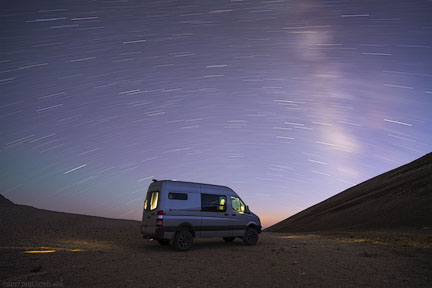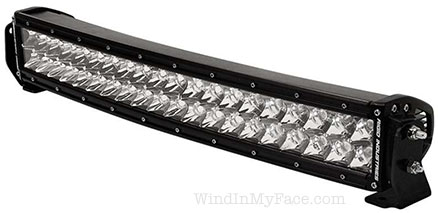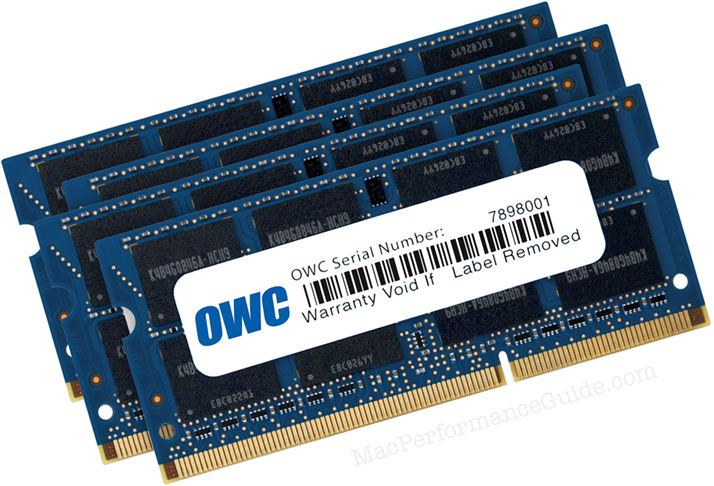
$220 SAVE $130 = 37.0% Western Digital 16.0TB Western Digital Ultrastar DC HC550 3.5-in… in Storage: Hard Drives
|

|

|

|

|
Mercedes Sprinter: Exterior Lighting / Light Bars

Photographer and cyclist and Mac expert and software engineer Lloyd Chambers is available for consulting on general Sprinter considerations at his usual consulting rates via phone, or in person in the Palo Alto, CA area. Save yourself hours and mistakes by discussing issues up-front. More about Lloyd....
My 2017 Mercedes Sprinter cargo van came with the halogen headlights, which are not particularly bright. In the 6th decade of my life, my eyes just don’t see as well at night, and I do not find the halogen lights adequate for driving. In particular, a dark asphalt road at night at 55 mph is too risky in not seeing a deer in time. At 65 or 70 mph on a concrete or grayish freeway it is not too bad because the road surface is medium-tone (not black), but still on the edge of acceptable out of the city, where suicidal deer often graze right at road’s edge.
When lights are needed most is when risk is at its highest: pouring rain, suicidal deer, the idiot in a black hoodie walking on the road (personal experience, I missed the guy). I don’t mess around with safety—one “oops” is a severely damaged vehicle, if only from a deer.
I would have gladly paid for the Bi-Xenon headlights but they are a factory-installed option and modification is infeasible after delivery. Accordingly I’ve opted to add front driving lights controlled by their own separate switch, the Rigid Industries RDS-Series 20" - Spot. The light bar will be installed as part of upfitting by ADF Sprinters.

- Emits a 10° cone of light from each LED.
- Unmatched output for wider spread
- Certified IP-68 for water & dust intrusion
- Certified to MIL-STD-810G for shock/ vibration
- Unbreakable polycarbonate lens UV & Abrasion resistant powder coat.
- Custom two-bolt mounting system for adjustability and strength.
- Unmatched Output & Efficiency
- Specifications: 150 watts, 10.87 amp draw, 40 LEDs, 10460 raw lumens
Light bar can block airflow to turbo intercooler
A light bar is often mounted right in front of the gap that allows air to directly flow to the intercooler for the turbo, thus blocking direct airflow to the turbo intercooler. Blocking airflow to any system intended for cooling is a Bad Thing and should be avoided.
The 2017 Mercedes Sprinter User Manual is plain about blocking airflow:
Notes on the radiator
Even seemingly small changes to the vehicle, such as attaching a radiator trim for winter driving, is not permitted. Do not cover up the radiator. Do not use thermal mats, insect protection covers or anything similar. Otherwise, the values of the diagnostic system may be affected. Some of these values are legally prescribed and must always be correct.
I almost aborted the light bar idea—I did not want to block airflow to the intercooler and I did not want an obnoxious and expensive front-end bar system cluttering up the the vehicle.
I considered mounting a light bar on the roof, but that means drilling holes and creating wind noise and extra cost and worst of all: blinding oncoming drivers for road driving, thus defeating a good part of my purpose for the light bar which is avoiding deer collisions or similar, paved-road driving being my primary consideration. Offroad speeds are far slower, so the lighting with the halogen headlights is fine and at night cooling is rarely a consideration.
Feeling stymied by these conflicting goals and drawbacks, I did some research, starting by calling OutsideVan.com, which installs many light bars on their builds in front of the turbo intercooler. Their view was that no issues had been seen and they were fully confident in the installation location. But of course they are up in the Pacific Northwest.
Ascending 3000 vertical feet from 4500' @ 105°F to 8000' @ 80°F at 45mph sends the radiator temperature about as high as I’ve ever seen it, and that’s with a nearly empty cargo van. So I was quite concerned about blocking airflow to the turbo intercooler because the turbo is surely working at maximum effort at those altitudes and temperatures.
Next I talked to ADF Sprinters, which agreed with my view that blocking airflow was a Bad Idea; they are reluctant to install anything that blocks airflow unless it is purely the customer decision. They do not suggest such things, being conservative in that regard, a good policy in my view. I was on the verge of abandoning the light bar idea at this point.
Finally I called a Mercedes technician at Mercedes of Reno. I learned some key information:
- The area in question is the intercooler for the turbo. The function of the intercooler is to cool the air that is leaving the turbo before it enters the engine, the function of that being to make the air more dense and thus contain more oxygen for more power (same issue as hot air vs cold air or going to altitude versus sea level—less oxygen with less dense air).
- There are temperature sensors before and after the turbo intercooler. if the cooling is insufficient, the Check Engine light will come on.
- When the intercooler is impeded in its function, there can be losses in engine performance and the system will self regulate to cut performance. Thus climbing a steep grade at altitude on a hot day with the intercooler partially blocked guarantees impaired performance. Even if the Check Engine light does not come on, the intercooler will NOT be able to cool the air as well as if direct airflow is blocked. Performance losses are thus guarranteed.
- The turbo will not be harmed, since the air has already left it. The engine should not be harmed either; it will just have reduced performance until it can get cooler air. These last concerns were primary—I did not want any risk of component stress or failure.
At much lower cost than Apple, with more options.
Lloyd recommends 64GB for iMac or Mac Pro for photography/videography.
BAD idea after all
I thought about all these considerations and ultimately decided to proceed with installing the light bar, knowing that it could be a $1600 (installed) mistake. BTW, the light bar is controlled via a switch on the dash. But by sheer luck, it was not shipped on time and I canceled it when I heard this one last thing: the head mechanic at Mercedes of Reno chimed in later with “NO NO NO, EMPHATICALLY NO”. That decided it for me—not going to happen. Bettr to design a special bracket that can just avoid the issue entirely.
My decision to proceed (prior aborting after hearing the NO-NO-NO comment) rested on the following considerations which are applicable to my use, but not necessarily for others:
- My Sprinter will be carrying much less weight compared to most rigs.
- I never tow anything (towing places far higher demands on the vehicle).
- The light bar would be very useful to me under many of my driving scenarios.
- The conditions of heat and altitude that are likely to impair performance
In general, I would advise most Sprinter owners to NOT install anything that blocks cooling airflow until/unless these factors are carefully weighed. Users in hot locations should exercise particular caution.
Seagate 22TB IronWolf Pro 7200 rpm SATA III 3.5" Internal NAS HDD (CMR)
SAVE $100




